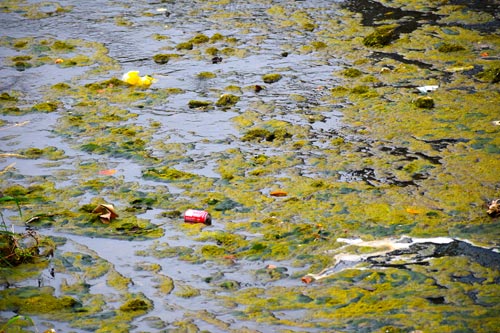- The Munster Suir catchment area has the highest decline in quality water status.
- Overall, there is no significant improvement in the biological quality of our rivers or lakes in 2022; improvements are happening in some areas but these are offset by declines elsewhere.
- When excess nutrients – nitrogen and phosphorus – enter our water courses, they cause an overgrowth of plants and algae. This in turn clogs up our water courses, uses up oxygen and harms fish and other aquatic life.
- Nitrogen levels, mainly from agriculture from fertilisers and manures, have increased in rivers and groundwater in 2022;
- Phosphorus levels, mainly from agricultural runoff and wastewater discharges, are generally stable but are still too high in many rivers and lakes.
- Action needs to be taken by the agriculture sector and Uisce Éireann to reduce the losses of both nutrients to the environment.
The Environmental Protection Agency (EPA) has today published the report Water Quality in 2022 – An Indicators Report which provides an update on the water quality of Ireland’s rivers, lakes, estuaries, coastal, and groundwaters for 2022. The report states that one of the most significant stressors on water quality and ecosystem health is high nutrient levels, such as nitrogen and phosphorus. These nutrients can enter our waters as a result of human activities such as agriculture, waste water and forestry. The EPA’s assessment shows no significant improvement nationally in the biological quality of rivers and lakes in 2022, which is largely attributable to excess nitrogen and phosphorous.
Overall, nitrogen levels in rivers and groundwater increased between 2021 and 2022. Nitrogen is too high in 40 percent of river sites and in 20 percent of estuarine and coastal water bodies. In addition, phosphorus levels are too high in 28 percent of rivers and 36 percent of lakes.
Commenting on the report, Dr Eimear Cotter, Director of the EPA’s Office of Evidence and Assessment, said: “Clean water is essential for our health and wellbeing, our economy and for wildlife. The failure to improve water quality in 2022 and over the longer term is extremely disappointing. We will not meet our water quality objectives until nutrient levels are reduced in those areas where they are too high. Addressing this must be a priority for the agriculture sector and Uisce Éireann to reduce the losses of nutrients to water. While we can see improvements happening in some areas, these are offset by declines elsewhere, so overall there is no discernible change in the biological quality of our rivers or lakes in 2022. Improvements need to be far greater and more widespread to translate into an improving national picture”.
The ecology of our estuaries and coastal waters are particularly sensitive to nitrogen. The worst impacted estuaries for nitrogen exceedances are Glashaboy Estuary (Cork), Wexford Harbour, Castletown Estuary (Louth), Upper Barrow Estuary (Kilkenny) and Corock Estuary (Wexford).
Changes in nutrient levels and biological quality are key indicators of progress in achieving our water quality objectives. When these excess nutrients enter our water courses, they cause an overgrowth of plants and algae. This in turn clogs up our water courses, uses up oxygen and harms other more sensitive aquatic life.
Mary Gurrie, EPA Programme Manager, added: “We need to see full implementation of the Nitrates Action Programme through compliance promotion and targeted agricultural inspections. Uisce Éireann must prioritise investment in areas where wastewater is impacting on water quality, and the forthcoming River Basin Management Plan must provide a comprehensive plan to address all the pressures on our water environment to protect and improve this precious resource.”
Water Quality in 2022 – An Indicators Report is now available on the EPA website


Leave a Reply